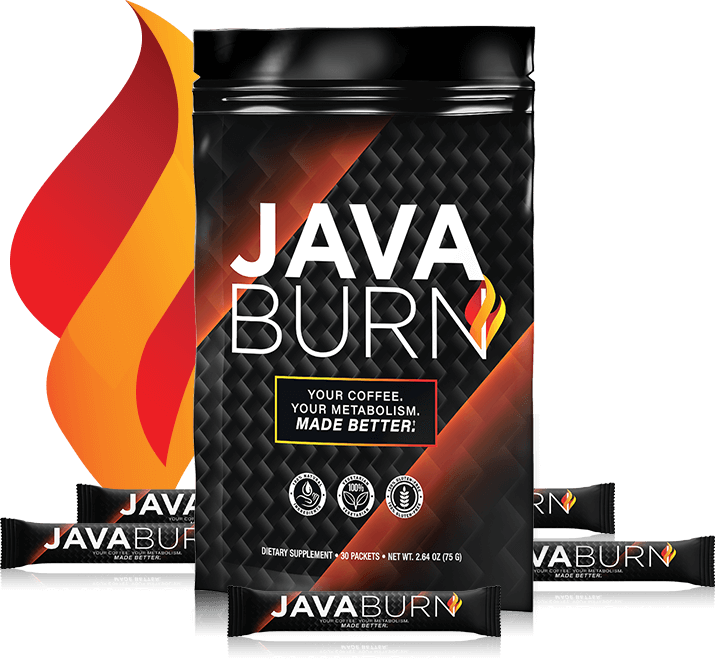In my journey, I learned that exercise alone doesn’t always help with weight loss. Over 60 studies show that exercise is good, but it’s not enough without changing what we eat.
A Cochrane Review found that exercise helps a bit with weight loss. It also improves blood pressure and cholesterol levels. But, people often think they’ll lose more weight than they do.
Prof. Herman Pontzer talks about a “sweet spot” in exercise. His research shows our bodies can get used to a lot of exercise. This is why some people stop losing weight even when they exercise a lot.
Studies on “The Biggest Loser” TV show found no strong link between exercise and weight loss. Instead, it’s about eating right and exercising.
Experts like Dr. Alison Tedstone and Dr. Asseem Malhotra say exercise is key for health, but diet is more important for weight loss. To lose weight well, we need to eat more protein, whole foods, and less sugar. This helps our fitness efforts pay off.
A vibrant gym scene featuring diverse individuals engaging in different exercises, showcasing a mix of strength training and cardio activities. In the background, a colorful food display with healthy meals and snacks emphasizes nutrition alongside fitness. The atmosphere is energetic and motivating, with bright lighting and modern equipment, highlighting the balance between exercise and a healthy diet for effective weight loss.
Key Takeaways
- Exercise alone often results in modest weight loss; pairing it with a proper diet is crucial.
- The body can adapt to high levels of activity, leading to a plateau in energy expenditure.
- Simple “calories in, calories out” model does not fully explain weight loss dynamics.
- Dietary adjustments, like consuming whole foods and reducing sugary drinks, significantly impact weight loss.
- Tracking food intake through diaries or photos enhances weight loss efforts.
The Importance of Diet in Weight Loss
Exercise is good for health, but diet is key for losing weight. A caloric deficit is important for weight loss. Katie Lawton, MEd, says eating fewer calories than you burn is needed.
/media/12fd874d20362759119d39aa64f43648
The Role of Caloric Deficit
Diet and exercise together work best for losing weight. A study by Wu et al. (2009) showed diet and exercise are better than diet alone. Eating right and being active helps avoid weight loss plateaus.
Balanced Diet for Sustainable Weight Management
Dr Frankie Phillips says a balanced diet and some exercise are key for keeping weight off. A study by Sumithran et al. (2011) found it’s hard to keep weight off due to hormonal changes. Eating well helps manage these changes.
Keeping weight off long-term is hard, as shown by Anderson et al. (2001). A good diet is crucial to avoid gaining weight back. Avoiding ultraprocessed foods helps your weight loss plan work better.
InterventionAverage Weight Loss (kg)Diet-only5.8Diet-plus-exercise7.2Exercise-only2.3Combined with lifestyle change7.2 (after 6 months — 3 years)Low-carbohydrate diet4.7
Exercise and Energy Expenditure: Understanding the Plateau
Many of us struggle to lose weight, even when we exercise a lot. This problem is called the energy expenditure plateau. It happens when our bodies stop using more energy, even if we move more.
What is the Energy Expenditure Plateau?
The energy expenditure plateau is a big challenge in losing weight. It’s when we exercise more but our body doesn’t burn more energy. At first, we lose water weight quickly. But then, we start losing muscle too.
This makes our metabolism slow down. So, we burn fewer calories. This is why losing weight gets harder.
Research Findings on Activity Levels and Weight Loss
Studies show that the energy expenditure plateau is a big problem for weight loss. One study found that after a certain point, exercising more doesn’t make us burn more energy. This is important because it changes how we think about losing weight.
To get past this plateau, we need to change how we exercise. We should do both cardio and strength training. We also need to watch our calorie intake. The WHO recommends at least 150 to 300 minutes of moderate to vigorous activity a week. We should also keep or grow our muscle mass through weightlifting.
Struggling to Lose Weight No Matter How Much You Exercise
Many of us feel stuck when we exercise but don’t see results. It’s true that even with lots of physical activity, losing weight can be hard. There are many things that affect how we manage our weight, not just working out.
One big thing is the energy expenditure plateau. Our bodies get used to more exercise and don’t burn more calories. So, just doing more workouts might not help you lose weight.

A person on a treadmill looking frustrated, surrounded by cloud-like weights symbolizing effort and struggle, with a backdrop of a scale showing no progress, soft lighting that conveys a sense of calm amidst the challenge, abstract shapes representing nutrition and lifestyle.
Things like sleep, drinking water, when we eat, and what we eat matter a lot. For example, not sleeping enough or too much can make us gain weight. Drinking the right amount of water helps us stay full and avoid eating too much.
Eating out a lot can also make it hard to control our weight. Big portions and hidden calories in restaurant food are a problem. Sitting for too long can make us eat more and gain weight. Drinking too much alcohol adds extra calories, making it harder to lose weight.
Hormones and health issues also affect our weight. For example, a slow thyroid can make us gain weight. Hormonal changes in menopause and losing muscle mass with age can also cause weight gain. Some medicines, like steroids and insulin, can make us gain weight too.
Knowing these details helps us find new ways to lose weight. It’s not just about exercising. We also need to watch what we eat, get enough sleep, manage stress, and make healthy lifestyle choices.
Factor Impact on Weight Sleep (less than 5 or more than 9 hours) Linked to weight gain Water Consumption (2–6 cups/day) Aids weight loss Meal Timing (long intervals between meals) Slows metabolism Restaurant Meals Harder to control weight Sitting (long periods) Increases overeating and obesity risk Alcohol (3+ drinks/day) Contributes to weight gain Thyroid Issues Leads to weight gain Medications Common side effect of weight gain
To really make progress, we need to think about everything that affects weight loss. By understanding these factors, we can avoid common problems and succeed in our fitness goals.
Combining Cardiovascular and Resistance Training
It’s key to mix both cardio and strength training in your workout. This combo boosts your fitness, burns more calories, and keeps your heart healthy.
A split scene showcasing a vibrant gym environment, one half depicting a person engaged in high-energy cardiovascular activity like running on a treadmill, surrounded by colorful fitness equipment, while the other half shows the same person performing resistance training with weights, emphasizing strength and determination, with dynamic lighting highlighting their movements and a feeling of energy and balance between the two training styles.
Benefits of Cardiovascular Exercise
Cardio, like running or swimming, is great for your heart. Just one hour a week can lower your risk of dying. Three hours a week is even better.
Cardio makes your heart work better and lowers your resting heart rate. It also improves your lungs. Adults should do 150 minutes of moderate cardio each week, says the American College of Sports Medicine.
Why Strength Training is Essential
Strength training builds muscle, which helps you burn more calories even when you’re not working out. Muscle burns more calories than fat. It also helps your body burn calories for up to 48 hours after working out.
The CDC says to do strength training two days a week. This helps with weight loss and prevents injuries. Lifting heavy weights makes your muscles stronger and more durable.
Creating a Balanced Workout Routine
A good workout mix is key. It should include:
- 150 minutes of moderate-intensity cardio per week, like walking or swimming.
- At least 2 days of resistance training per week, focusing on different muscles.
- High-Intensity Interval Training (HIIT) sessions for fat loss and more calorie burn.
- Flexibility and stretching exercises to keep you mobile and injury-free.
Don’t forget rest days. They help your muscles recover and prevent overtraining. A balanced routine helps you reach your fitness goals and stay healthy for the long term. Enjoyable workouts make sticking to your routine easier.
Exercise Type Recommended Duration Key Benefits Cardiovascular 150 minutes per week Heart health, calorie burn, improved lung function Resistance Training2+ days per week Muscle building, increased resting metabolic rate, injury prevention HIIT2–3 sessions per week Efficient fat loss, increased EPOC Flexibility and Stretching Daily Enhanced mobility, injury prevention
Breaking the Weight Loss Plateau
Breaking a weight loss plateau is tough. But knowing why it happens is key. When we lose 5–10 percent of our weight, our metabolism drops by 15 percent. This leads to a weight loss stall.
To get past this, we need to change our workout and diet plans.

Adjusting Your Exercise Routine
Staying consistent is important. Missing one workout can lead to missing another. So, if you’re not seeing results, it’s time to mix things up.
Try adding cardio and strength training. This boosts your metabolism and helps keep muscle mass. Also, making your workouts harder or longer can help break through the plateau.
Monitoring Caloric Intake
Watching what you eat is more than just counting calories. When you eat less, your body wants more food. This can lead to eating too much after working out.
Make sure you eat enough protein. Aim for 0.8 to 1 gram of protein per kilogram of your body weight. Protein helps keep muscle, aids in losing weight, and makes you feel full.
Ensuring Sufficient Rest and Recovery
Rest and recovery are crucial. Sleep helps control hunger hormones. Not enough sleep (less than 7–9 hours) can lead to bad food choices and eating more.
Also, rest helps your muscles heal and grow. This improves your metabolism and helps you lose weight.
Strategies Details Adjusting Exercise Routine Incorporate a mix of cardio and strength training; increase workout intensity Monitoring Caloric Intake Track intake meticulously; focus on protein (0.8–1g/kg of body weight)Rest and Recovery Get 7–9 hours of sleep; allow muscles to recover to improve metabolic rate

Conclusion
Looking back, we see that losing weight is more than just moving more. Exercise is good for health, but it’s not the main key to weight loss. Studies from the US and UK show that exercise alone doesn’t help much with weight loss.
Diet is key, as studies by Dr. Timothy Church show. To lose weight, you need to eat less, not just move more. For example, burning 500 calories might take two hours of cycling, which is hard for many.
Childhood obesity shows us that eating more than we burn is a big problem. This makes it clear that we need a balanced plan that includes both diet and exercise.
Research suggests mixing cardio with strength training to keep muscle and lose belly fat. Short HIIT workouts also help control hunger. These methods can make losing weight easier and better for our minds.
So, a good weight loss plan mixes smart eating with regular exercise. This way, we not only lose weight but also stay healthy for a long time. By knowing what exercise can and can’t do, we can make better plans to reach our goals.